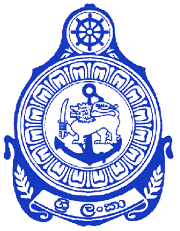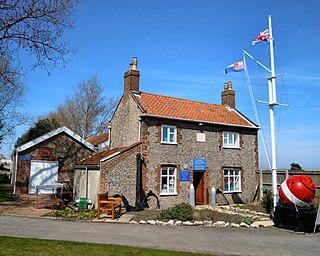
The Royal Norwegian Navy is the branch of the Norwegian Armed Forces responsible for naval operations of Norway. As of 2008, the Royal Norwegian Navy consists of approximately 3,700 personnel and 70 vessels, including 4 heavy frigates, 6 submarines, 14 patrol boats, 4 minesweepers, 4 minehunters, 1 mine detection vessel, 4 support vessels and 2 training vessels. It also includes the Coast Guard.

The Royal Canadian Navy is the naval force of Canada. The RCN is one of three environmental commands within the Canadian Armed Forces. As of 2023, the RCN operates 12 frigates, four attack submarines, 12 coastal defence vessels, eight patrol-class training vessels, two offshore patrol vessels, and several auxiliary vessels. The RCN consists of 8,400 Regular Force and 4,100 Primary Reserve sailors, supported by 3,800 civilians. Vice-Admiral Angus Topshee is the commander of the Royal Canadian Navy and chief of the Naval Staff.
HMAS Acute was an Attack-class patrol boat operated by the Royal Australian Navy (RAN).
Six ships and a shore establishment of the Royal Navy have been named HMS Europa, after the Greek mythological character Europa.

The South African Navy (SA Navy) is the naval warfare branch of the South African National Defence Force.

The Royal Navy Police (RNP) is the service police branch of the Royal Navy and Royal Marines. Members of the RNP enforce service law and discipline.

HMAS Cairns is a Royal Australian Navy (RAN) base located adjacent to the Trinity Inlet on the shore of Trinity Bay in Cairns, Queensland, Australia. Although used regularly as a port-of-call since before World War II, a permanent RAN presence was not established until 1971, when a maintenance and support base for patrol boats was set up. The base was formally commissioned in 1971 as a minor war vessel base. The current commander of the base is Commander David Hannah, RAN.

HMD Bermuda was the principal base of the Royal Navy in the Western Atlantic between American independence and the Cold War. The Imperial fortress colony of Bermuda had occupied a useful position astride the homeward leg taken by many European vessels from the New World since before its settlement by England in 1609. French privateers may have used the islands as a staging place for operations against Spanish galleons in the 16th century. Bermudian privateers certainly played a role in many English and British wars following settlement, with its utility as a base for his privateers leading to the Earl of Warwick, the namesake of Warwick Parish, becoming the most important investor of the Somers Isles Company. Despite this, it was not until the loss of bases on most of the North American Atlantic seaboard threatened Britain's supremacy in the Western Atlantic that the island assumed great importance as a naval base. In 1818 the Royal Naval Dockyard, Bermuda officially replaced the Royal Naval Dockyard, Halifax, as the British headquarters for the North America Station (which would become the North America and West Indies Station after absorbing the Jamaica Station in 1830.

HMS Example is an Archer-class patrol and training vessel of the Royal Navy, based at HMS Calliope in Gateshead, England. Example was originally built for the Royal Naval Auxiliary Service, and was transferred to the Royal Navy when the RNXS disbanded in 1994. On transfer, she retained her name, and became the first ship in the Royal Navy to bear that name.

The Sri Lanka Navy (SLN) is the naval arm of the Sri Lanka Armed Forces and is classed as the country's most vital defence force due to its island geography and is responsible for the maritime defence of the Sri Lankan nation and its interests. The role of the Sri Lanka Navy is to conduct operations at sea for the defence of the nation and its interests and conduct prompt and sustainable combat operations at sea in accordance with the national policies.

HMS Collingwood is a stone frigate of the Royal Navy, in Fareham, England. It is the lead establishment of the Maritime Warfare School and the largest naval training organisation in Western Europe. The Maritime Warfare School is a federated training establishment incorporating HMS Excellent, the Defence Diving School, the RN Physical Training School, the School of Hydrography and Meteorology in Plymouth and the Royal Marines School of Music in Portsmouth Naval Base.

The Royal Naval Patrol Service (RNPS) was a branch of the Royal Navy active during both the First and Second World Wars. The RNPS operated many small auxiliary vessels such as naval trawlers for anti-submarine and minesweeping operations to protect coastal Britain and convoys.
Naval trawlers were purpose-built or requisitioned and operated by the Royal Navy (RN), mainly during World Wars I and II. Vessels built to Admiralty specifications for RN use were known as Admiralty trawlers. All trawlers operated by the RN, regardless of origin, were typically given the prefix HMT, for "His Majesty's Trawler".
HMS Abatos was a Royal Navy shore establishment responsible for the planning of Operation Pluto, the construction of the undersea pipeline that supplied the Allied troops with fuel during the liberation of Europe in 1944, after D-Day. There was another Operation Pluto training establishment at Tilbury, under the name HMS Abastor.

The Port of Lowestoft is a harbour and commercial port in Lowestoft in the English county of Suffolk owned by Associated British Ports. It is the most easterly harbour in the United Kingdom and has direct sea access to the North Sea. The harbour is made up of two sections divided by a bascule bridge. The inner harbour is formed by Lake Lothing whilst the outer harbour is constructed from breakwaters. Lowestoft handles around 30,000 tonnes of cargo per year.

The Naval Reserve is the Primary Reserve component of the Royal Canadian Navy (RCN). The primary mission of the NAVRES is to force generate sailors and teams for Canadian Armed Forces (CAF) operations, including: domestic safety operations as well as security and defence missions, while at the same time supporting the Navy's efforts in connecting with Canadians through the maintenance of a broad national presence.
HMS Keats (K482) was a British Captain-class frigate of the Royal Navy in commission during World War II. Originally constructed as the United States Navy Evarts-class destroyer escort USS Tisdale (DE-278), she served in the Royal Navy from 1943 to 1946.

The Lowestoft War Memorial Museum is a museum located in Lowestoft in the English county of Suffolk. It is housed in the World War II headquarters of the Royal Naval Patrol Service in Sparrows Nest Gardens in the north of the town. The museum is dedicated to all of the people of Lowestoft who served during World War I and World War II. It was opened in 1995, to coincide with the 50th anniversary of VE day on 8 May that year.

Lowestoft Maritime Museum is a private museum in the town of Lowestoft in Suffolk, England that is dedicated to local and national maritime history. Its exhibits include maritime artefacts including medals awarded to Royal Navy and RNLI personnel, marine art, the fishing industry in Lowestoft and the town's involvement with the Royal Navy in World War II, shipwrights and coopers tools, an extensive collection of ship models in various scales, the workshop of Christopher Cockerell, the inventor of the hovercraft, and a small display dedicated to Thomas Crisp, a local man who posthumously won the Victoria Cross during World War I. Britain's most easterly museum, it is run by enthusiasts and volunteers and is open to the public from late April to late October each year. The museum was the Suffolk Museum of the Year in 2012 and a finalist in 2014. There is an admission charge.

RNAS Bermuda was a Royal Naval Air Station in the Royal Naval Dockyard on Ireland Island until 1939, then Boaz Island, Bermuda. Bermuda became the primary base for the North America and West Indies Station of the Royal Navy in the North-West Atlantic following American independence. It was the location of a dockyard, an Admiralty House, and the base of a naval squadron.













